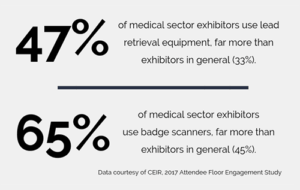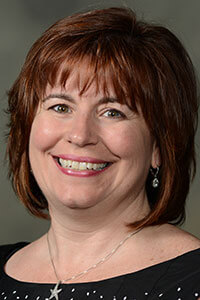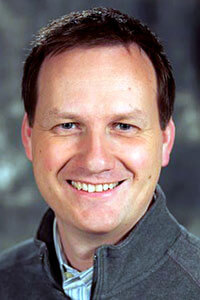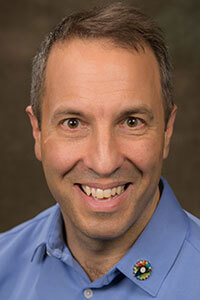The financial health of a medical association often depends on whether its annual convention exhibit floor is sold out. But health-care event organizers face a unique challenge when demonstrating to exhibitors the value of their participation. A doctor doesn’t step up to a booth for a new drug, hear the sales pitch, and sign an order for 10,000 units.
“Buying power for physicians is a little tricky because it’s more prescribing than buying,” said Stacy McManus, the American Thoracic Society’s (ATS) director of corporate alliances and exhibition operations. “And if they’re writing scripts, we don’t necessarily know whether it was because of our conference or another conference or direct-to-consumer advertising.”
Orders for medical devices are no easier to trace, considering the lengthy purchasing timelines for costly equipment. In a recent ATS survey, McManus found that 80 percent of ATS’s exhibitors participate in the conference to make physicians aware of their product or company. But more than half — 56 percent — arrive looking for sales leads.
“From an exhibitor standpoint, I would say we’re all looking for that magical ROI,” said Michael Glatts, senior director of global congresses for Pfizer. “But we’re not selling a tangible product that people are coming to and purchasing at these events. Part of our reason for being there is to demonstrate our commitment to advancements in a therapeutic or disease area. That’s a difficult thing to put an ROI on.”
As a result, medical meetings are finding other ways to demonstrate their value to current and prospective exhibitors. From beacon-collected data to lead scanners to third-party evaluations, here’s how two medical meetings are tackling the exhibitor ROI challenge.
Strategy 1: Beacon Technology + Retrieval Devices
Who dropped into a specific exhibitor’s booth? Who lingered outside but ultimately kept walking? Who never even made it to the exhibit hall?
Those are all important questions for exhibitors, and new technology is making it easier for event organizers to supply the answers. After years of relying on radio-frequency identification (RFID), ATS switched to beacons two years ago. The combination of Bluetooth technology, strategically placed receivers, and a physical beacon — about the size of a quarter — on each attendee’s badge means that ATS can now pinpoint exactly where people go and what they do throughout the conference. And they can share that information with data-driven exhibitors.
 McManus said that all ATS exhibitors receive some basic, beacon-gathered stats for free, including how many attendees went into the exhibit hall; a heat map that illustrates which parts of the hall experienced the most (and least) foot traffic; the average number of booths an attendee visited; and the average time they spent in a booth. For an additional fee, exhibitors can receive even more detailed results. ATS can give exhibitors information — in real-time — about every person who was in or around their booth for two minutes or more. Names are kept private, but key demographic data is included.
McManus said that all ATS exhibitors receive some basic, beacon-gathered stats for free, including how many attendees went into the exhibit hall; a heat map that illustrates which parts of the hall experienced the most (and least) foot traffic; the average number of booths an attendee visited; and the average time they spent in a booth. For an additional fee, exhibitors can receive even more detailed results. ATS can give exhibitors information — in real-time — about every person who was in or around their booth for two minutes or more. Names are kept private, but key demographic data is included.
“Now you see all the people that you captured, but you’re also seeing all the people that you didn’t capture,” McManus said. “If you look at the data and folks who are your target audience were in front of your booth for two minutes or more but didn’t come in, how come you didn’t get them as part of your lead process? Companies can look at that [data] and start to think through what may have happened.”
The optional upgrade also tells exhibitors how long attendees spent inside their booth, how many repeat visitors they had, and how closely each visitor’s demographic profile aligned with the exhibitor’s focus — another insight into whether they’re attracting the people they want.
The Radiological Society of North America (RSNA) made the switch to beacon technology last year after a 10-year relationship with RFID readers. Now RSNA organizers can measure aisle traffic, how many visitors stopped at each booth, how long they spent inside, and how many of those visitors became leads. “All of that helps [exhibitors] justify their investment in RSNA,” said John Jaworski, the society’s director of meetings and exhibition services.

Stacy McManus
ATS and RSNA may be frontrunners in this tech among medical events. “We would love it,” Glatts said, if more medical associations used beacon technology at their meetings, where appropriate. “But we don’t see a lot of it,” he added. “Medical associations are often more conservative and sometimes reluctant to do that type of tracking.”
To help exhibitors follow up on leads at the ATS conference, exhibitors can rent lead retrieval devices, which let them scan a potential customer’s badge and instantly receive their contact information. Exhibitors can even add customized questions into the lead retrieval device — such as an attendee’s anticipated date of purchase — so that they can pinpoint how hot or cold a given lead is.
Strategy 2: Evaluation From a Third-Party Expert
It’s hard to spot your own weaknesses in any given situation, but exhibiting can be especially confounding.
Attendees might snub one booth for something as small as a bad font choice on the sign or poor table placement, but flock to the booth next door because it has an interactive demo.
To help exhibitors determine what’s working for and against them on the show floor, ATS offers a complimentary outside evaluation.
Competitive Edge, a Charlotte, North Carolina–based exhibitor education, training, and consulting firm, sends three experts to comb the hall and review each booth at the ATS conference. After the meeting concludes, each exhibitor receives a report with insights on their exhibit presentation, product, or service presentation, and exhibit staff.
“They can then take it and use [those findings] for any show where they exhibit,” McManus said. “It’s not specific to ATS; it’s specific to that particular booth.”
At the 2018 conference, Competitive Edge also selected three exhibitors for a new, best-of-show award.
In addition to bragging rights, the winners received a crystal award at the end of the first day, which they could then display in their booths for the rest of the conference.
ATS also wrote about the winning companies in a newsletter that goes to all attendees after the conference.
McManus admits that ATS had struggled to keep first-time exhibitors coming back, with retention numbers that lagged behind those of their peers. In 2017, Competitive Edge helped ATS launch a new program specifically for its first-timers. Every new-to-ATS exhibitor receives a welcome letter and a series of timed emails with exercises to help them prepare for the show. As a result of these new efforts, McManus said, ATS’s exhibitor retention rate has gone up 7 percent.
Strategy 3: Ideas to Bring Attendees to the Hall
How many attendees does it take to pack an exhibit hall? Many conferences never find out.
But drawing people to the hall is essential to supporting exhibitors — and McManus can remember some hits and misses from the past few years.
One approach that worked at the 2018 convention was the addition of a booth focused on wellness and physician burnout to the exhibit hall. It featured massage chairs, an anonymous quiz that physicians could take to assess whether they were experiencing burnout, and tips for combatting fatigue. And one other thing: There were dogs.
The visiting therapy dogs became “the buzz of the conference,” McManus said. “Every photograph that we have of that particular booth, people are on their hands and knees, petting the dogs in their dresses and suits, giant smiles on their faces. It was such a hit and a great ad for the conference.
“People would see the volunteers coming down the foyers outside the exhibit hall with the dogs and just follow them in like the Pied Piper,” she added. Attendees didn’t even mind waiting in line for their massages — not with dogs to pet. “Who doesn’t like a dog?” McManus said. “I mean, really.”
ATS also offered a free headshot booth in the exhibit hall, along with areas that served coffee and healthy snacks twice a day. And in the early afternoon on the conference’s last day — usually a slow time for exhibitors — ATS has introduced a networking event complete with a Champagne toast to drive traffic into the hall. McManus said that exhibitors are indeed logging higher numbers of visitors on that final day now with the bubbly being poured.
On the food front, RSNA has partnered with McCormick Place Convention Center at its Annual Meeting to create Bistro RSNA — a buffet lunch served in the back of the exhibit hall. Even though the meal is an extra fee, Jaworski said it entices attendees to pass through the entire hall on their way to eat.
But as ATS learned the hard way at its 2016 conference held in San Francisco, offering food in the exhibit hall can be tricky. That year, ATS opened the exhibit hall at 8 a.m. for a continental breakfast instead of the usual 10:30 a.m. start time. “We found that attendees came in, grabbed breakfast, turned around and went right back out,” McManus said. “Then once the first session kicked in at 9:15, it was a ghost town in the exhibit hall — and had been since 8 when everybody grabbed their food and left. The exhibitors were not happy with that.”

John Jaworski
Strategy 4: Opportunities to Educate Instead of Sell
“We often hear that attendees want to be educated and not sold to,” McManus said. So ATS has devised opportunities for companies to reach attendees in educational-style settings outside of the booth.
For various fees, exhibitors can present in two large industry theaters on the show floor that each hold 250 people, or they can buy time in a mini theater that holds 50 people. ATS also organizes a “practical workshop” for medical-device companies — a 50-minute, hands-on presentation where attendees learn how to use the equipment.
For smaller exhibitors, ATS added four “guru bars” to its 2018 conference. “It’s a much more intimate environment,” McManus said. Set up as mini theaters, each guru bar holds about 25 people. Attendees sit on cubes instead of chairs. Speakers often ditch the podium and talk from out in the audience instead, and the presentations are shorter, too: about 15 or 20 minutes long, including a quick Q&A at the end.
“We have companies that take multiple time slots over the course of the day or over the course of a conference,” McManus said, “and some of them had all 25 cubes filled and another 100 to 150 people standing around the guru bar listening.”
She also encourages exhibitors to provide in-booth education — typically through demos — and to let ATS know about it in advance so they can help publicize it.
Jaworski said that RSNA also supports exhibitors in their efforts to educate. Several years ago, the association began to allow live ultrasound scanning on the show floor using demo models.
And just this year, they changed their guidelines on in-booth presentations. Now doctors can give product demonstrations and offer peer-to-peer demos. “We keep modifying our opportunities for exhibitors,” Jaworski said. “More and more companies, especially in the healthcare arena, are trying to market through education.”
In addition to floor and booth demos, RSNA allows exhibitors to organize corporate symposiums, lunch-and-learns, and other educational programs at its Annual Meeting. “That’s been a really positive change for us,” Jaworski added.

David Saef
Event marketing company GES recently helped a medical convention create a direct link between its educational sessions and the show floor. After giving their conference presentations, select speakers moved to the floor to lead roundtable discussions at designated meet-up zones. During the agenda-free, peer-to-peer chats, speakers “are not teaching but just talking,” said David Saef, GES’s executive vice president of strategy. “We found that people want a conversation.” It’s also another way to draw physicians to the floor and help them connect with exhibitors.
Strategy 5: Educating the Exhibitors
Exhibitors are also on the receiving end of education. ATS develops a new webinar for exhibitors every year and archives its past offerings.
Topics have included attracting the right people to your booth, pre-show marketing, and lead management and follow-up.
On the ATS website, an Exhibitor Success and ROI Center is stocked with how-to exhibiting articles, intended for first-time or new exhibitors, or people who are new to their jobs. “And the articles are not ATS-specific,” McManus said. “They’re meant to be used no matter where they exhibit and useful for any conference they go to.”
Jaworski estimates that RSNA will offer up to six webinars this year to help exhibitors prepare for its meeting — “so that hopefully they’ll have a better meeting and a better ROI,” he said. The webinars will teach exhibitors how to maximize their social media presence while exhibiting, how to design an engaging booth, how to staff a booth, best practices in “boothmanship,” and how to follow up on leads post-show.
RSNA also has partnered with a third-party consultant this year to offer a boot camp for 16 new exhibitors. Participants will take six courses and work one-on-one with a consultant to prepare for the rigors of exhibiting. “As much as we can, [an association] has to assist the small companies who may not be as savvy at exhibiting and help them become more comfortable,” Jaworski said.
Strategy 6: An Independent Attendance Audit
After the ATS conference ends each year, an independent registration company sifts through names and crunches numbers to assemble a detailed, third-party audit.
Since exhibitors are always searching for more data, ATS shares its full audit online — and much of it goes into the exhibitor prospectus, too.
The audit includes exact attendee numbers, exhibitor numbers, where attendees are from, where they work, and what their areas of interest are. “Having that in hand really helps [exhibitors] make decisions on whether or not they want to participate,” McManus said.
ATS sends all their exhibitors a free attendee list. It doesn’t include names, but it does list institutions and cities — information that exhibitors can cross-reference with their own databases to help plan who they’ll target and decide how they’ll staff their booths.
A few months before the conference, exhibitors can also purchase a list that does include attendees’ names (as long as those attendees didn’t opt out during the registration process). The upgraded list allows exhibitors to send out pre-show marketing. RSNA also supplies exhibitors with an audience breakdown, including their sub-specialties within radiology. “We’re fortunate that we have a large meeting of over 50,000 attendees,” Jaworksi said. “We’re able to demonstrate the value in size very easily. It’s now demonstrating: ‘Is my customer there?’”
And like ATS, RSNA sells exhibitors an advance registration list that includes attendees’ names and mailing information.
These significant efforts aren’t only about event organizers satisfying their exhibitors, or even attracting them. That’s part of it, of course, but it’s also about making the event a win for all sides. “From the ATS’s viewpoint, the more successful the exhibitors are,” McManus said, “the more successful we all are.”
Molly Petrilla is a contributing editor to Convene, based in New Jersey.
Editor’s Note: This article was originally published as a PCMA white paper, supported by Destination Cleveland. Please register below to download this white paper in PDF format.
Test Time
- Earn one clock hour of certification credit. Once you’ve finished reading this article, read the Forbes article, “Trade Show ROI: Four Ways to Make the Most Out
of Industry Events,” written from the perspective of an exhibitor. - To earn certification clock hours, visit the CMP Series page to answer questions about information contained in this CMP Series article and the additional material.
The Certified Meeting Professional (CMP) is a registered trademark of the Events Industry Council.

